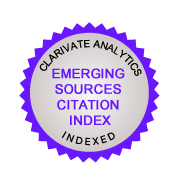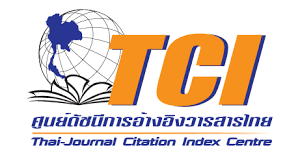Effects of the chemical treatment on coal-fired bottom ash for the utilization in fiber-reinforced cement composites
DOI:
https://doi.org/10.55713/jmmm.v29i4.488Keywords:
Chemical treatment, Coal-Fired bottom ash, Fiber-cement, Heat of hydrationAbstract
Around 3 million tons of municipal solid wastes called bottom ash (BA) are produced annually from the coal-fired power plants and it is still much underutilized in Thailand. Hence, the increasing usage of BA in industrial scale is necessary to limit the environmental impacts from landfilling of those by-product. Using of BA in fiber cement (FC) manufacturing seems to be a promising one. However, several negative effects regarding the extremely high water content from the fiber-cement forming process (Hatschek process) and the BA characteristic (the creation of bubble network) need to be eliminated. Both mentioned inferiors significantly reduce the cement hydration mechanism leading to remarkable reductions of set and hardened performances of fiber cement. Therefore, chemical treatment (CT) was introduced to boost up the hydration kinetic and characterized via the relevance of higher heat of hydration. Additionally, scanning electron microscope (SEM) was used to reveal the beneficial effects of treated BA through the microstructures. The results showed the chemically treated BA improve kinetic of hydration reaction was from the modification of BA surface.Downloads
References
W. Wongkeo and A. Chaipanich, “Compressive strength, microstructure and thermal analysis of autoclaved and air cured structural lightweight concrete made with coal bottom ash and silica fume,” Materials Science and Engineering: A, vol. 527, pp. 3676-3684, 2010. DOI: https://doi.org/10.1016/j.msea.2010.01.089
W. Wongkeo, P. Thongsanitgarn, K. Pimraksa, and A. Chaipanich, “Compressive strength, flexural strength and thermal conductivity of autoclaved concrete block made using bottom ash as cement replacement materials,” Materials & Design, vol. 35, pp. 434-439, 2012. DOI: https://doi.org/10.1016/j.matdes.2011.08.046
A. Akhavan, J. Catchmark, and F. Rajabipour, “Ductility enhancement of autoclaved cellulose fiber reinforced cement boards manufactured using a laboratory method simulating the Hatschek process,” Construction and Building Materials, vol. 135, pp. 251-259, 2017. DOI: https://doi.org/10.1016/j.conbuildmat.2017.01.001
S. Rai and S. Tiwari, “Nano Silica in Cement Hydration,” Materials Today, vol. 5, pp. 9196- 9202, 2018. DOI: https://doi.org/10.1016/j.matpr.2017.10.044
A. Abdulmatin, W. Tangchirapat, and C. Jaturapitakkul, “An investigation of bottom ash as a pozzolanic material,” Construction and Building Materials, vol. 186, pp. 155-162, 2018. DOI: https://doi.org/10.1016/j.conbuildmat.2018.07.101
G. C. Bye, Portland Cement 2nd Ed. London: Thomas Telford Limited, 1999.
Z. Chen and E.-H. Yang, “Early age hydration of blended cement with different size fractions of municipal solid waste incineration bottom ash,” Construction and Building Materials, vol. 156, pp. 880-890, 2017. DOI: https://doi.org/10.1016/j.conbuildmat.2017.09.063
E. John, T. Matschei, and D. Stephan, “Nucleation seeding with calcium silicate hydrate – A review,” Cement and Concrete Research, vol. 113, pp. 74-85, 2018. DOI: https://doi.org/10.1016/j.cemconres.2018.07.003
J. Sun, H. Shi, B. Qian, Z. Xu, W. Li, and X. Shen, “Effects of synthetic C-S-H/PCE nanocomposites on early cement hydration,” Construction and Building Materials, vol. 140, pp. 282-292, 2017. DOI: https://doi.org/10.1016/j.conbuildmat.2017.02.075
ASTM C311-02, Standard Test Methods for Sampling and Testing Fly Ash or Natural Pozzolans for Use as a Mineral Admixture in Portland-Cement Concrete, ASTM International, West Conshohocken, PA, 2000.
ASTM C186-98, Standard Test Method for Heat of Hydration of Hydraulic Cement, ASTM International, West Conshohocken, PA, 1998.
G. Land and D. Stephan, “Controlling cement hydration with nanoparticles,” Cement and Concrete Composites, vol. 57, pp. 64-67, 2015. DOI: https://doi.org/10.1016/j.cemconcomp.2014.12.003
J. J. Thomas, H. M. Jennings, and J. J. Chen, “Influence of nucleation seeding on the hydration mechanisms of tricalcium silicate and cement,” The Journal of Physical Chemistry, vol. 113, pp. 4327-4334, 2009. DOI: https://doi.org/10.1021/jp809811w
Downloads
Published
How to Cite
Issue
Section
License
Copyright (c) 2019 Journal of Metals, Materials and Minerals

This work is licensed under a Creative Commons Attribution-NonCommercial-NoDerivatives 4.0 International License.
Authors who publish in this journal agree to the following terms:
- Authors retain copyright and grant the journal right of first publication with the work simultaneously licensed under a Creative Commons Attribution License that allows others to share the work with an acknowledgment of the work's authorship and initial publication in this journal.
- Authors are able to enter into separate, additional contractual arrangements for the non-exclusive distribution of the journal's published version of the work (e.g., post it to an institutional repository or publish it in a book), with an acknowledgment of its initial publication in this journal.












